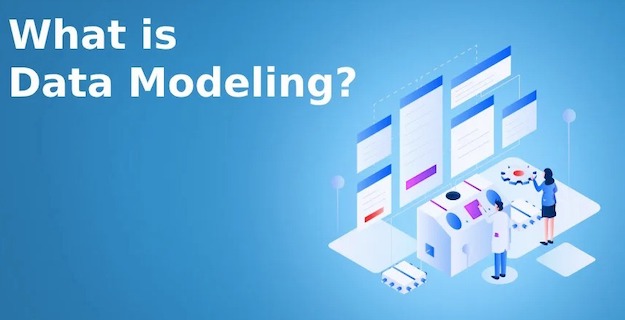In other words, data science and applied AI have a much more significant effect on modern IT than you can measure. Data analysis may support the entire value chain of data science programming from data collection to understand the impact of business-centered decision making.
Data modeling is a crucial tool for companies to speed up their application and unlock their data’s value. R Programming plays a vital role in this value chain. Since R is a free software language, worldwide companies invest heavily in developing their infrastructure on data science models.
R training will help you achieve a great deal for your data science career by ensuring that you continue to research through an IT-centric integration script between the extensive academic and the business community, respectively. Overall, your learning in the R course would validate your data science skills for industry-relevant projects that mostly revolve around AI, machine learning, and IoT applications.

Data Modeling – Definition
Data modeling is a tool used to describe business activities and to organize them. It enables you to build your company visually by observing, knowing, clarifying, and underpinning your business processes.
Data models are scientific but also built to be easy and (primarily) visual. It ensures that they find the sweet spot between challenging to comprehend tech-speak and daily terminology. Data models allow everyone in your company to understand and work more efficiently with your data.
Often it would help if you relied on packages outside of R’s core functionality to perform complex modeling analyses. It is a procedural language that divides a programming task into several steps and procedures. It is advantageous for data model building because it helps understand how complex operations are carried out reasonably easily; however, it is always at the cost of efficiency and code learning.
Data Model
The Data model organizes data description, data semantics, and constraints on data quality. The data model stresses what data is required and how it should be structured rather than data operations. The Data Model is like the architect’s building plan, which helps design conceptual models and connects data objects.
Need for Data Modeling
The main objective of the data model is:
# It ensures the correct representation of all data objects required by the database. The data omission will lead to inaccurate reports and the generation of incorrect results being obtained.
# A data model may assist in the concepts, the physical and logical nature of a database.
# Data Model structure helps to describe relational tables, primary and external keys, and stored procedures.
# Provide a simple image of the database data, which database developers can use to build a physical database.
Also, you may identify incomplete and redundant data.
# Though the initial creation of a data model is labor and time-consuming, in the long run, it makes your IT infrastructure upgrade and maintenance cheaper and faster.
Six key advantages of efficient Data Modeling:
These advantages are accomplished only by the successful deployment of data models and harmonizing business and IT teams.
1. Managing data as a resource:
Data modeling enables you to normalize and describe the data in terms of its meaning and attributes. Data modeling also offers tools to query and report the database. You will find yourself with a large amount of data, and without a good data model, you cannot use it effectively – or in any way. Business users can access information that you may not collect with a suitable data model and a well-designed database. Business users may access information that they could – maybe – not even know was obtained with an appropriate data model and a well-designed database.
2. Simplify existing information systems:
Several companies have data in various designs that do not communicate with each other. Through modeling the data in each of the systems, you can see relationships and redundancies, inconsistencies that you can resolve, and systems integrated to cooperate.
3. To build databases and repositories:
You must model the data to create a good database. It is generally the main result of a data modeling project that has been addressed here. You can, however, also make better decisions on data storage and repositories by modeling the data. You can see whether you need a global warehouse, an individual data mart, or a collection of integrated data marts. You may determine whether a relational database or NoSQL database is required. Describing your data is the best way to understand your business needs regarding data storage and service.
4. Knowing the business:
The data modeling method allows you and your teams to understand in greater depth how the company functions to describe the data that drives it. To build a customer database, you need to understand what data is gathered and how it is used. The data and relationships embodied in a data model form the basis for a business process understanding.
5. Business Intelligence:
If the criteria are fully met, data from various sources and query and reporting requirements are included. You will have business intelligence opportunities that are not available where your data existed in silos or hazardous databases.
6. Knowledge transfer:
For both business stakeholders and technical experts, data modeling is a source of documentation. Starting by having a shared vocabulary that different jobs can share and offering newcomers a thorough business glossary, the ability to record and communicate your business knowledge is greatly enhanced. A data dictionary constructed from a well-executed exercise in data modeling cannot be replaced as a training aid.
Final thoughts
You can take complete control over data descriptions and metadata with the right data modeling approach. However, it takes a little more time to implement these data definitions. It would help if you had a way of turning written frameworks into operational code to bridge the gap between data modeling and data integration.
Check out some guides to make data modeling workable if you’re curious about how data modeling works. It shows how you can unlock the data modeling promise so that your data strategy and company can thrive.




